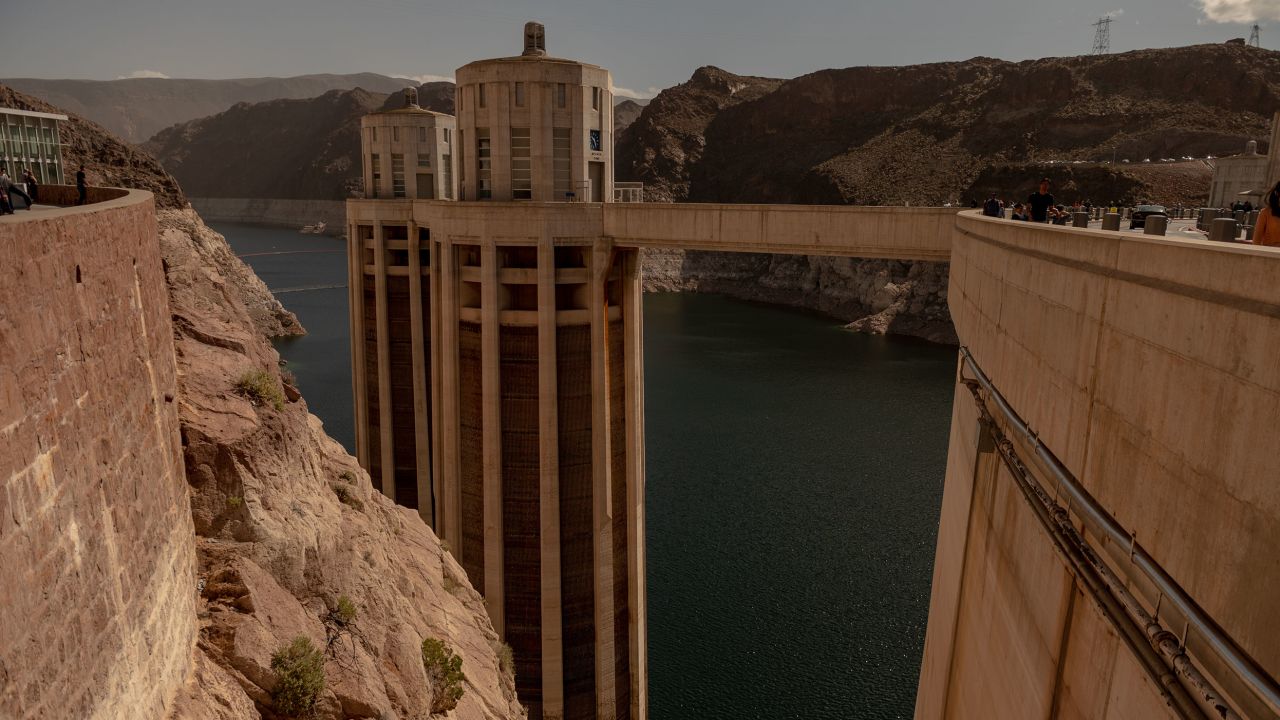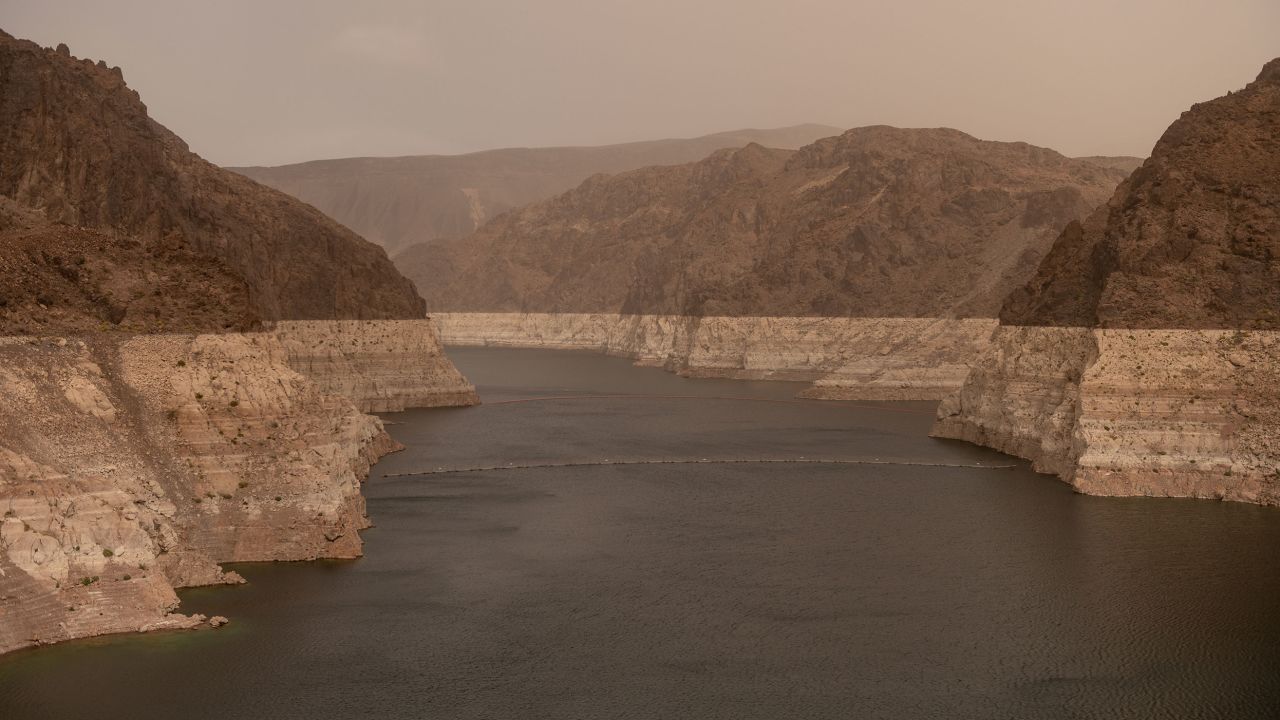begin quote from:
https://www.cnn.com/2023/06/24/us/how-much-lake-mead-water-rise-climate/index.html

Here’s how much Lake Mead could rise after an epic winter and new water cuts
Lake Mead, the nation’s largest reservoir, spent much of last spring and summer in free fall.
Over the course of four months, Mead’s elevation plummeted an astonishing 20 feet, first exposing one of the lake’s huge intake valves in April before revealing more sinister things – multiple sets of human remains, including one police said was the result of a decades-old homicide.
But as news reports focused on the remains, Western state officials and Colorado River experts were watching the falling water level with fear about what it could mean for the 40 million people who rely on the river for drinking water, electricity and crop irrigation.
Lake Mead fell to its lowest level to-date in July 2022, when the elevation sat at 1040 feet. If the reservoir had fallen another 145 feet, it would have become a “dead pool,” unable to provide water or hydroelectric power to millions of customers.
“People were really looking at the real possibility of dead pool,” Sarah Porter, director of the Kyl Center for Water Policy at Arizona State University, told CNN. “That is incredible to think about – no water coming off either of the two reservoirs,” she said, referring to Lake Mead’s upstream neighbor, Lake Powell.
One year later, Mead’s elevation is inching back up. A combination of historic winter snowpack and new federal agreements to pay cities, farmers and tribes to conserve water are expected to raise Mead to a high point of 1,070 feet in February 2024, according to the most recent federal data. That elevation will likely change as more conservation agreements are signed.
Paying people to save precious water was an essential component to the recent deal struck between lower basin states Arizona, California, and Nevada to collectively conserve 3 million acre-feet over the next three years, experts say.
But as maps and charts show, the extra water will be a drop in the bucket for a reservoir that has dramatically declined in the past two decades.
Mead’s projected high elevation of 1,070 next year “is a lot better than 1,045,” Porter said. “It sounds like a nice elevation, but we know how fast it can go down.”
The conservation agreements will certainly contribute to Lake Mead’s modest rise in the coming months. But state officials and experts told CNN the largest effect on the reservoir by far will be the deluge of winter snow melting into the Colorado River headwaters.
The June 2023 forecast from the Colorado Basin River Forecast Center shows a projected inflow of 13.85 million acre-feet into Lake Powell for 2023, which is 144% of the average inflow.
“We’re doing great from a water year perspective,” Paul Miller, a hydrologist at the Colorado Basin River Forecast Office, told CNN.
Still, the drought deficit is so large, experts say the West would need four or five more years of snowmelt like this year’s to really fill up Powell and Mead.
Experts say the winter snowpack, however exceptional, is “buying time” for states to come up with a way to live with far less water in a warmer and drier future.
“I don’t know if it’s about breathing room as it is buying more time to have really critical conversations,” Miller said.
For Western states, he added, the situation allows time to figure out “how do we take advantage of this relatively wet year to implement some water savings strategies and water efficiency strategies.”
The Bureau of Reclamation, which manages interstate river reservoir systems like Lakes Mead and Powell, is acutely aware this winter’s snow and rain was an ephemeral windfall as the West gets hotter and drier.
“While we had an exceptionally wet winter this year, our long-term drought concerns persist,” bureau commissioner Camille Calimlim Touton told CNN in a emailed statement. “We will continue to work with cities, Tribes, irrigators, and other stakeholders to ensure current investments and future system conservation measures are durable, sustainable, and contribute to long-term water savings in the Colorado River.”
Good winters followed by equally good spring runoff have been hard to come by in the West in recent years. Even when above-average snowpack has fallen, the runoff hasn’t produced as much water because the parched ground sucks up more water before it can make it to the reservoirs.
“You have one good year and it’s historically followed by three bad years,” James Heffner, a senior hydrogeologist at the Arizona Department of Water Resources told CNN.

Even with this good year, the Colorado River is still expected to be operating in a so-called Tier 1 shortage next year – an improvement over the first-ever Tier 2 shortage that was implemented this year, and necessitated additional water cuts from Arizona, Nevada and Mexico.
Even so, states are expected to continue to cut back on their water use with the federally compensated program.
Kristen Johnson, manager ADWR’s Colorado River programs, told CNN the great water year “could not have come at a better time.”
“It really provided some breathing room,” she said. “Otherwise, we’d be in a very uncomfortable position without the hydrology.”
No comments:
Post a Comment